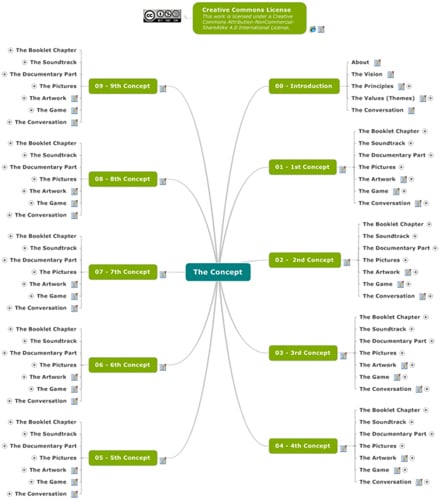To this end, I've created a framework which could prove very useful for conceptualising and executing multi-publishing projects. Read on to find out more.
1. Why multi-publishing?
There is increasing evidence of an evolution in the way people consume digitally enabled content, e.g. watching a TV show whilst surfing the web, talking on the phone to a friend and posting comments on social media - all of which may or may not relate to each other or a single topic. This has put enormous pressure on content creators and publishers to find new ways to engage their audience and deliver compelling content to people that live in a world surfeit with competing content, channels, devices and distractions.
In the above scenario, broadcasters have tried, with varying degrees of success, to engage viewers with second or multi-screen, content (e.g. show on TV, cast info on website / mobile site, plus real time interaction on social media - all related to the show). Furthermore, the average attention span of most users appears to have shrunk and many prefer to 'snack' on content across devices and formats.
This doesn't bode well for the more traditional long-form content upon which many creative industries were established. As a result, many in the content production, publishing and marketing industries are seeking new ways to engage audiences across multiple devices and channels with even more compelling content and user experiences.
2. What is multi-publishing?
In this context, the term ‘multi(n) publishing’ (or multi-publishing) describes the manifestation of a core concept / theme as distinct but inter-linked works across multiple media formats, channels and genres. This is somewhat different from other similar related terms such as: multi-format (or cross-media), multi-channel, single source, or even multi-platform publishing. The last one being mainly used by marketers to describe the practice of taking one thing and turning it into several products across a spectrum of online, offline and even 'live' experiential forms. The key difference between these terms and multi-publishing is that the latter encompasses them all, and more.
In fact, the multi-publishing framework is closer to the information science idea of conceptualisation. Also, and perhaps more importantly, the various manifestations of multi-published content are not necessarily brand identical to the originating (aka 'native') core concept, or to each other. However, each and every manifestation is intended to be unique and distinct, yet able to enhance each other and provide a fuller and more fulfilling experience of the overall core concept.
3. How does it work?
In order to achieve the desired outcome of the whole being more than a sum of its parts, it makes sense for creators and publishers to bear in mind, right from the outset, that their works will likely be: used, reused, decomposed, remixed and recomposed in so many different ways, (including new and novel expressions of which they couldn't possibly imagine at the time of creation). Therefore, they must recognise where and how each of their output content fits within the context of a multi-publishing content framework or architecture. The diagram below is just such a framework (in mindmap form) and demonstrates the narrative-like progression of a single core concept / theme across various stages and interlinked manifestations.

This is only an example of what content creators and their publishers must consider and prepare as part of their creative (inspiration) and publishing (exploitation) process. It requires the creation and / or identification of a core concept which is manifest in the expression of the art (e.g. in the story, song, prose, images, video, game, conversations or presentations etc), and which can be used to link each and every format, channel or media in which the concept is expressed.
Finally, the use of multi-publishing frameworks can also enable easier setup and automation of tracking and recording of all usage transactions, and potentially any subsequent remuneration for creator(s) and publisher(s), in a transparent manner, (perhaps using a trust mechanism such as blockchain). I will explore this particular topic in a subsequent post on this blog. In any case, there remains one key question to be answered: how can or should we consider protecting core concepts or algorithms at the heart of multi-publishing frameworks, and if so what form should such protection take?

















